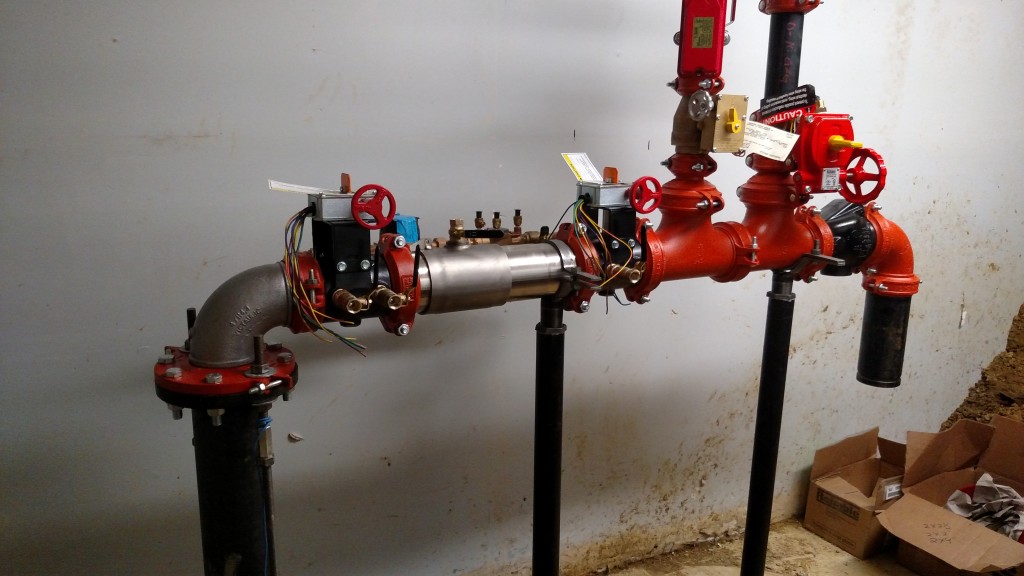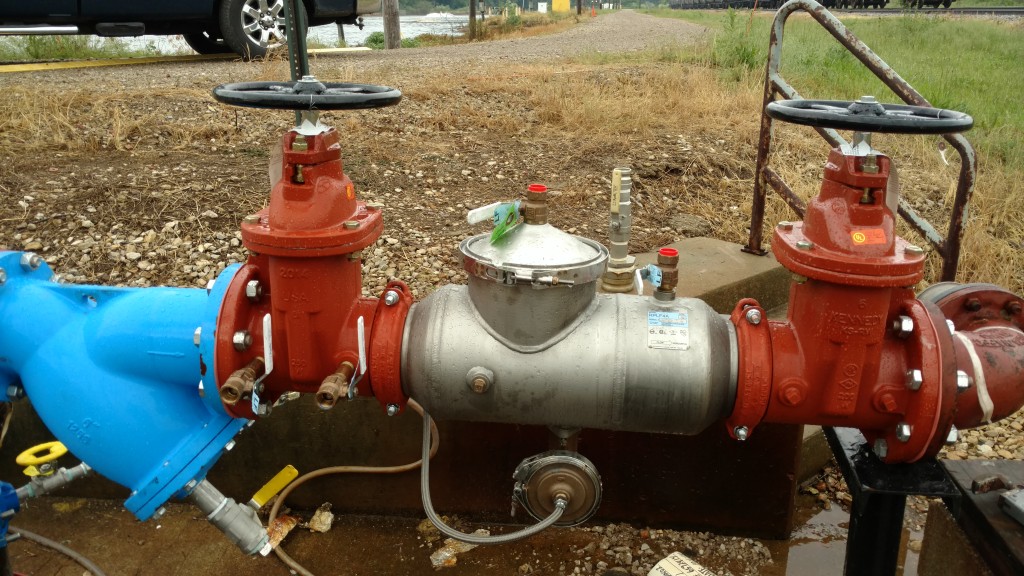Backflow Testing

Backflow Testing
A backflow testing device is used to protect potable water supplies from contamination or pollution due to back flow.
In water supply systems, water is normally maintained at a significant pressure to enable water to flow from the tap, shower, or other fixture. Water pressure may fail or be reduced when a water main bursts, pipes freeze, or there is unexpectedly high demand on the water system (for example, when several fire hydrants are opened). Reduced pressure in the pipe may allow contaminated water from the soil, from storage, or from other sources to be drawn up into the system.
Backflow means the undesirable reversal of flow of a liquid, gas, or suspended solid into the potable water supply; a backflow preventer is designed to keep this from happening. Points at which a potable water system connects with a non-potable water system are called cross connections. Such connections occur naturally in appliances such as clothes washers and dishwashers, but they must be carefully designed and installed to prevent backflow. Another common location for a backflow preventer is the connection of a fire sprinkler system to a water main, to prevent pressurized water from flowing from the fire suppression system into the public water supply.
Back-siphonage occurs when higher pressure fluids, gases, or suspended solids move to an area of lower pressure fluids. For example, when a drinking straw is used to consume a beverage, suction reduces the pressure of fluid inside the straw, causing liquid to move from the cup to inside the straw and then into the drinker’s mouth. This is an example of an indirect cross-connection, undesirable material being pulled into the system.

Back-pressure occurs for example when air is blown through the straw and bubbles begin to erupt at the submerged end. If instead of air, natural gas had been forced into a potable water tank, the gas in turn could be carried to a kitchen faucet. This is an example of a direct cross-connection, with undesirable material being pushed into the system.
Back pressure can force an undesirable contaminant to enter potable water piping. Sources of back pressure may be boilers, heat exchanging equipment, power washing equipment, fire sprinklers, or pumps in the water distribution system. In some cases there may be an almost continuous risk of overcoming the static water pressure in the piping. To reduce the risk of contamination, a backflow preventer can be fitted. A backflow preventer is also important when potentially toxic chemicals are used, for instance for commercial/industrial descaling of boilers, or when chemical bleaches are used for residential power washing.
Backflow Testing Prevention Devices:
The simplest, most reliable way to provide backflow prevention is to provide an air gap. An air gap is simply an open vertical space between any device that connects to a plumbing system (like a valve or faucet) and any place where contaminated water can collect or pool. A simple air gap has no moving parts, other than flowing water.
Alternatively, a specialized backflow preventer valve may be installed at strategic locations in the plumbing system wherever there is a risk of contaminated fluids entering the water supply pipes. These valves are used where there is not sufficient vertical clearance or physical space to install an air gap, or when pressurized operation or other factors rule out use of an air gap. Because these valves use moving parts, they are often required to be inspected or tested periodically.




